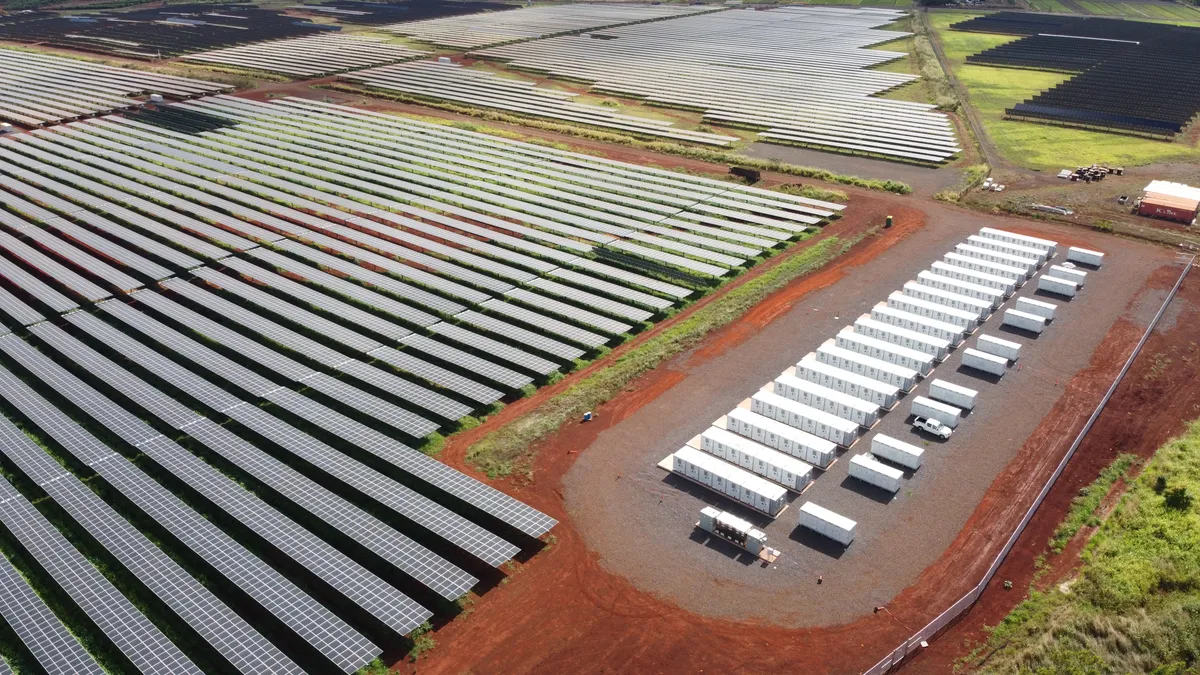As of this year, there are more solar-plus-storage facilities than standalone energy storage systems in the world, according to Clean Horizon. More than half of deployed storage capacity in the United States is co-located with solar, and analysts indicate this trend is set to continue––63 percent of storage capacity planned to come online from 2021 to 2024 will be paired with solar.
There are several reasons for this trend. First, siting both solar and energy storage assets at a single substation provides numerous benefits. Not only does co-location result in the most efficient use of land and grid capacity, but also, having to secure only one interconnection agreement is a major driving factor for developers.
There is a 1,300-gigawatt (GW) backlog of clean energy projects awaiting interconnection to transmission grids across the country. Since 2015, wait times have risen from about a year and a half to more than three and a half years in 2021. In the same period, interconnection upgrade costs have grown from about 10 percent of project costs to between 50 to 100 percent. Connecting generation and storage to the grid at the same point is becoming an imperative to amortize interconnection costs.
Lawrence Berkeley National Lab reports there are 286 GW of hybrid solar projects, primarily solar-plus-storage, in the queue. This means 42 percent of the total 676 GW of planned solar projects are paired with storage––up from 34 percent in 2021.
Combining solar with storage helps developers meet requirements for reliability and move through the interconnection process more quickly. Storage makes solar a dispatchable energy source by filling in intermittency and variability of power output, giving utilities control over when energy can be discharged to the grid and the ability to accurately commit power in the day-ahead market.
Cost is also a driving factor in the solar-plus-storage trend. Solar has been the cheapest way to generate electricity in most parts of the world since 2020. While in the recent past it was more economical to overbuild solar capacity rather than adding energy storage, the price of energy generation from a solar-plus-storage facility has been declining rapidly in recent years. This figure doesn’t even account for the new sources of revenue that the addition of energy storage opens. Developers can also take advantage of the investment credit (ITC), which is eligible for batteries that are charged at least 75 percent by a solar facility.
In response to this trend, developers and integrators are finding new ways to improve solar-plus-storage design. Until recently, nearly every solar-plus-storage facility globally was AC-coupled, where the battery system and solar plant are connected to separate inverters in parallel. However, now that solar and storage assets are being sited together, an AC-coupled system adds some system inefficiencies which can lead to additional line loss and potential increased CapEx.
Enter: DC-coupling, where solar generation flows directly to the battery via a DC/DC converter. This seemingly minute design difference has significant consequences. By reducing the number of AC/DC conversions, developers can reduce energy loss, with DC-coupled systems about three percent more efficient than AC-coupled systems. Plus, DC/DC converters are less expensive than AC/DC inverters. We expect DC/DC converter manufacturing volume to rise as more DC-coupled systems are deployed, which would lower prices even more and reduce overall equipment expenditure. At scale, this has meaningful implications on the project’s bottom line.
Applications like energy shifting, in which the batteries are charged and discharged frequently, benefit the most from the minimal efficiency losses that DC-coupling provides. DC-coupling avoids production curtailment by storing power that would otherwise be “clipped” in the battery. To maximize plant productivity, the rated power of the solar design deployed is always greater than the rating of the AC/DC inverters. When maximum power is reached on AC-coupled systems, the surplus of energy over the inverter threshold is lost (clipping). But with DC-coupled systems, the clipped energy can easily be stored in the battery. Project owners can then sell power to the grid at night to generate additional revenue. Power conditioning system ratings are also added together for interconnection agreement applications. Since DC-coupled projects have a higher DC/AC ratio, they have a larger output of solar energy.
At a time when supply chain constraints are resulting in overall higher costs and setbacks for energy storage projects, every bit of efficiency and profit that can be gained becomes extremely important. We foresee DC-coupled systems to become the new industry standard as more solar and energy storage capacity is built to decarbonize the grid.










